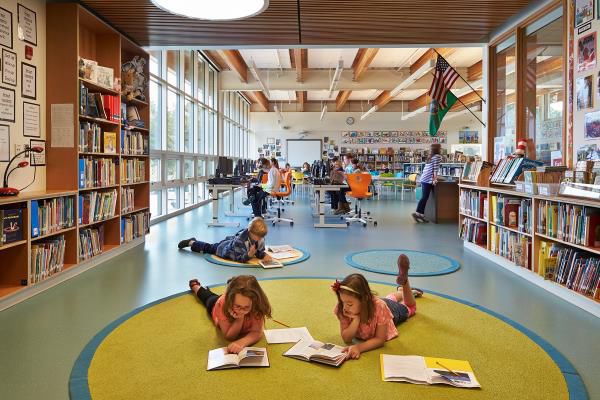
(StatePoint) In recent years, policymakers have focused on how to improve student performance, scrutinizing factors like school day start times and the nutritional value of school-provided meals. However, the basic design and configuration of schools and classrooms can also have a major impact on student success, and this fact is now getting its due attention.
The classroom environment can impact a child’s academic progress by as much as 25 percent in one year, according to a UK study at the University of Salford. Armed with a growing body of evidence of the link between school design and student performance, architects are altering their ideas accordingly.
“As a profession, we have been working closely with neuroscientists, educators, parents and even school children to make more informed design choices for 21st century learning environments,” says John Dale, chair of the American Institute of Architects Committee on Architecture for Education, and studio leader at Harley Ellis Devereaux, an architecture and engineering firm. “Through these interactions, architectural approaches have evolved so that classrooms in much greater numbers are becoming flexible laboratories that can accommodate a variety of learning opportunities.”
Findings show that kids learn in different ways, whether it’s by sitting, standing or collaborating in groups; and experts say the school at-large and the classroom in particular need to be responsive to these varying arrangements. Dale outlines the most important design elements that can improve academic performance:
• Lighting (natural and artificial) that mimics the natural circadian rhythms of a day as best it can.
• Views that provide an ability to see nature and appreciate space and surroundings that stimulate students’ imagination, while actually allowing greater focus on the subject at hand.
• Acoustics that minimize background noise and reverberations, and foster an environment that allows for better concentration and attention to the teacher.
• Ventilation that promotes the best possible indoor air quality to avoid the spread of illness and maintain student focus.
• Room layout, furnishings and décor that that hits the sweet spot between stimulating versus overwhelming clutter.
At its best, school layout and design can also extend the classroom outdoors and provide students more opportunities to engage. There are ways to promote greater physical movement, such as strategic placement of “irresistible staircases” (staircases that are so beautifully designed they are difficult to resist,) and by structuring the building so that natural flow of walking is the norm.
Schools that have been designed to be sustainable can also offer teachable moments about ecology and energy-efficiency by spotlighting elements such as water conservation measures and solar panel placement.
As schools move far away from institutional closed classrooms populated by rows of students tethered to desks, architects are spearheading the movement towards spaces that help students maximize their full academic potential. In many instances nationwide, new school designs are becoming a focal point of a community and serving as a beacon of civic pride along the way.
*****
Photo Credit: (c) Benjamin Benschneider






